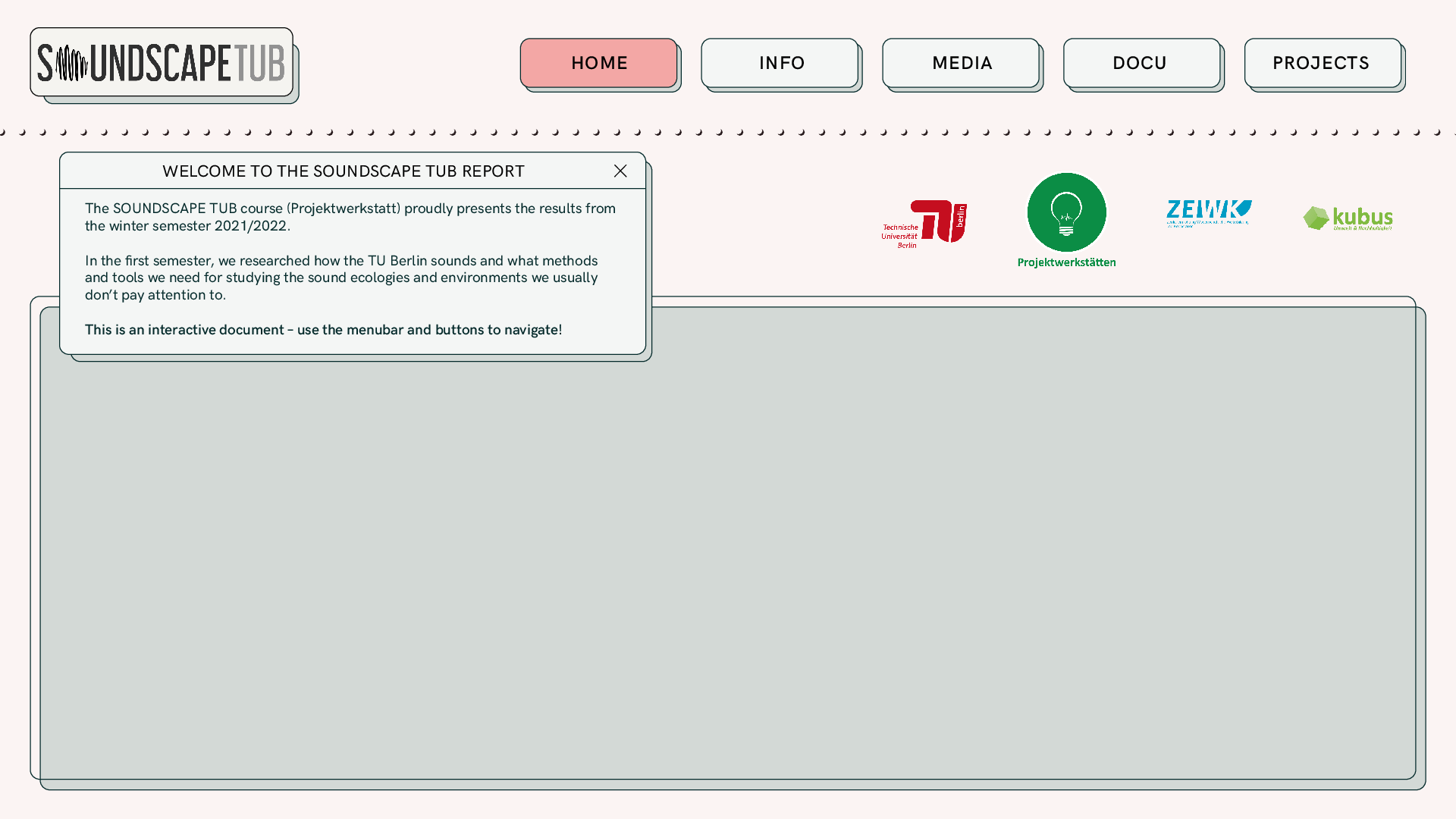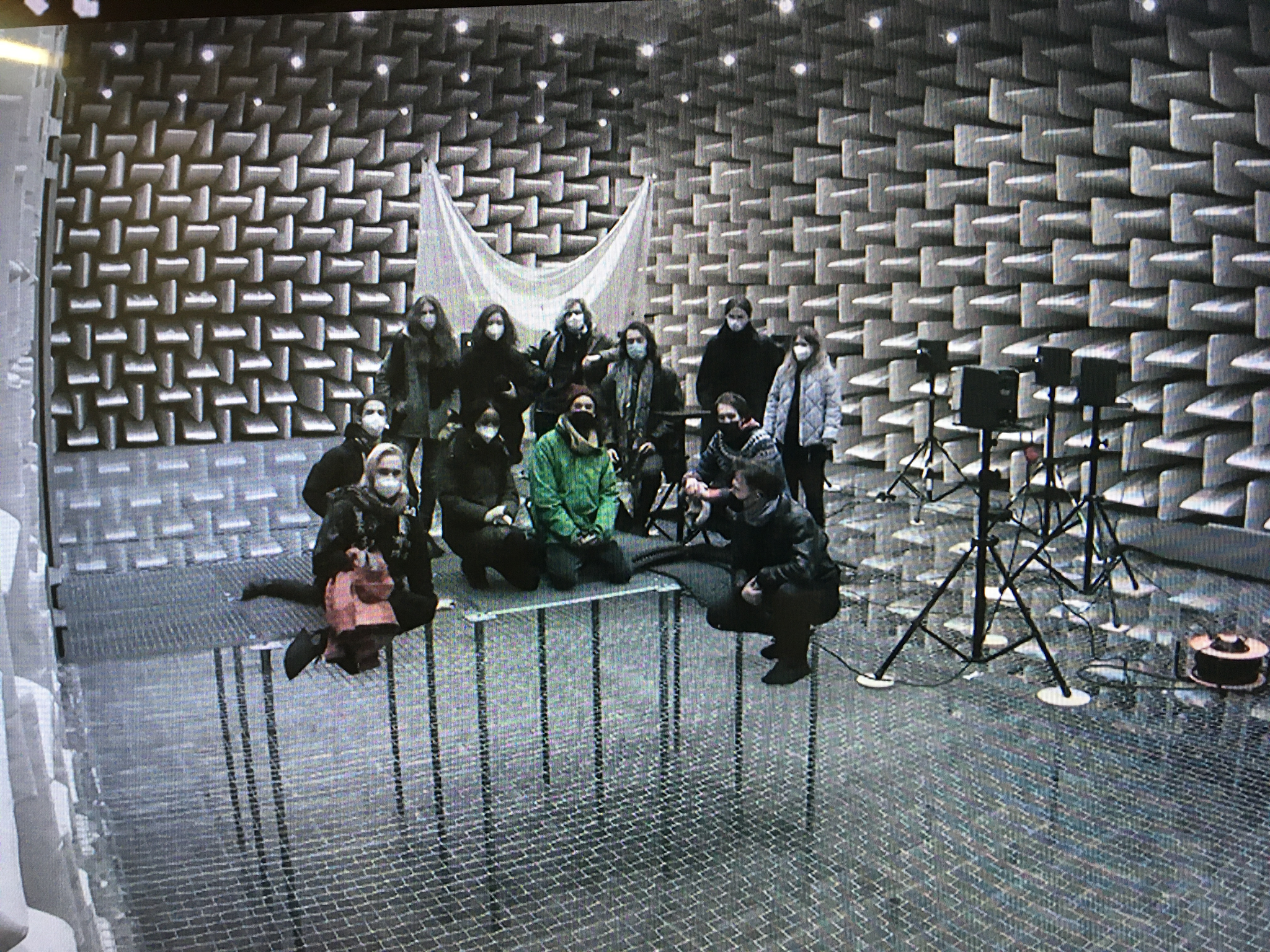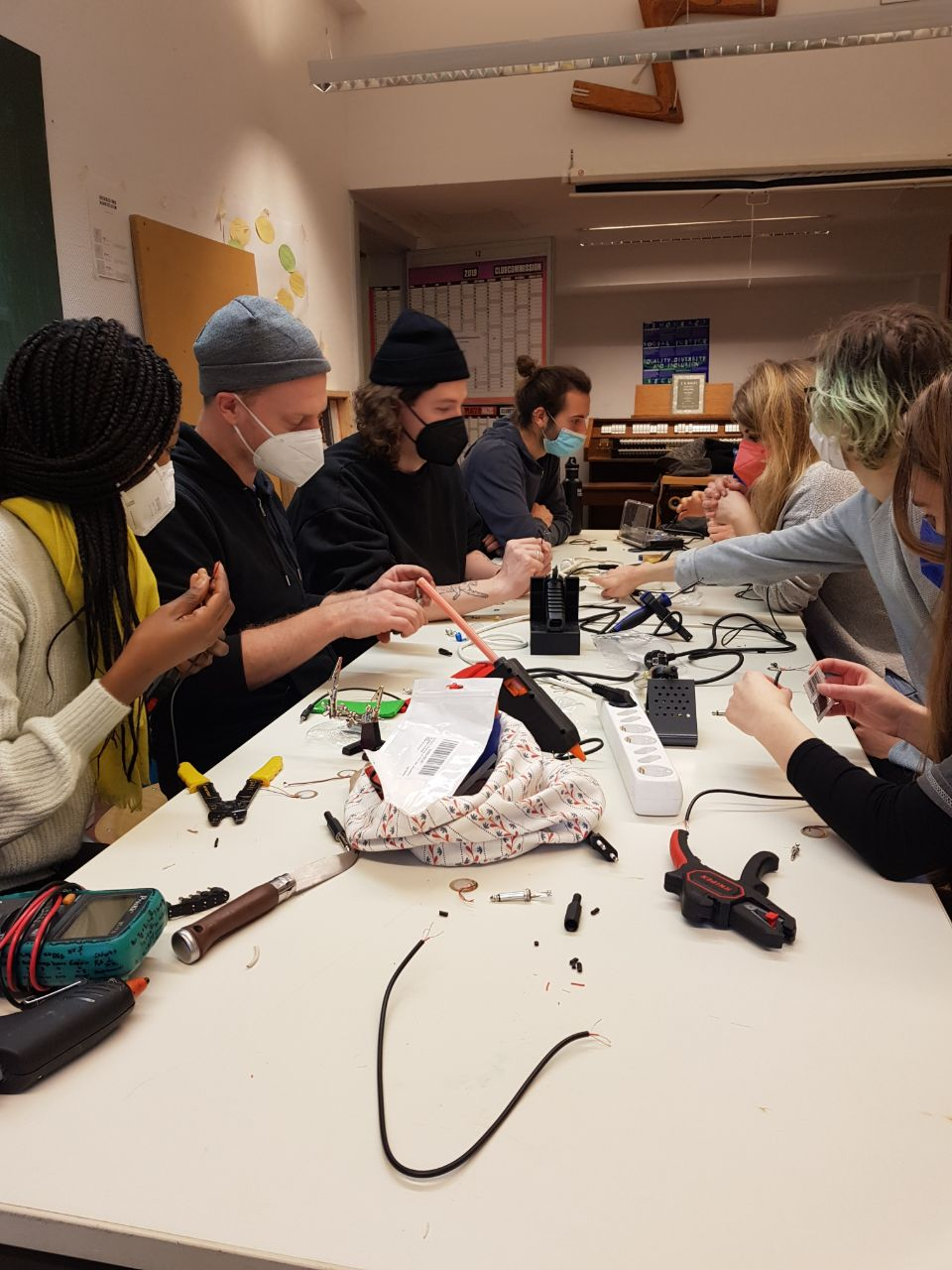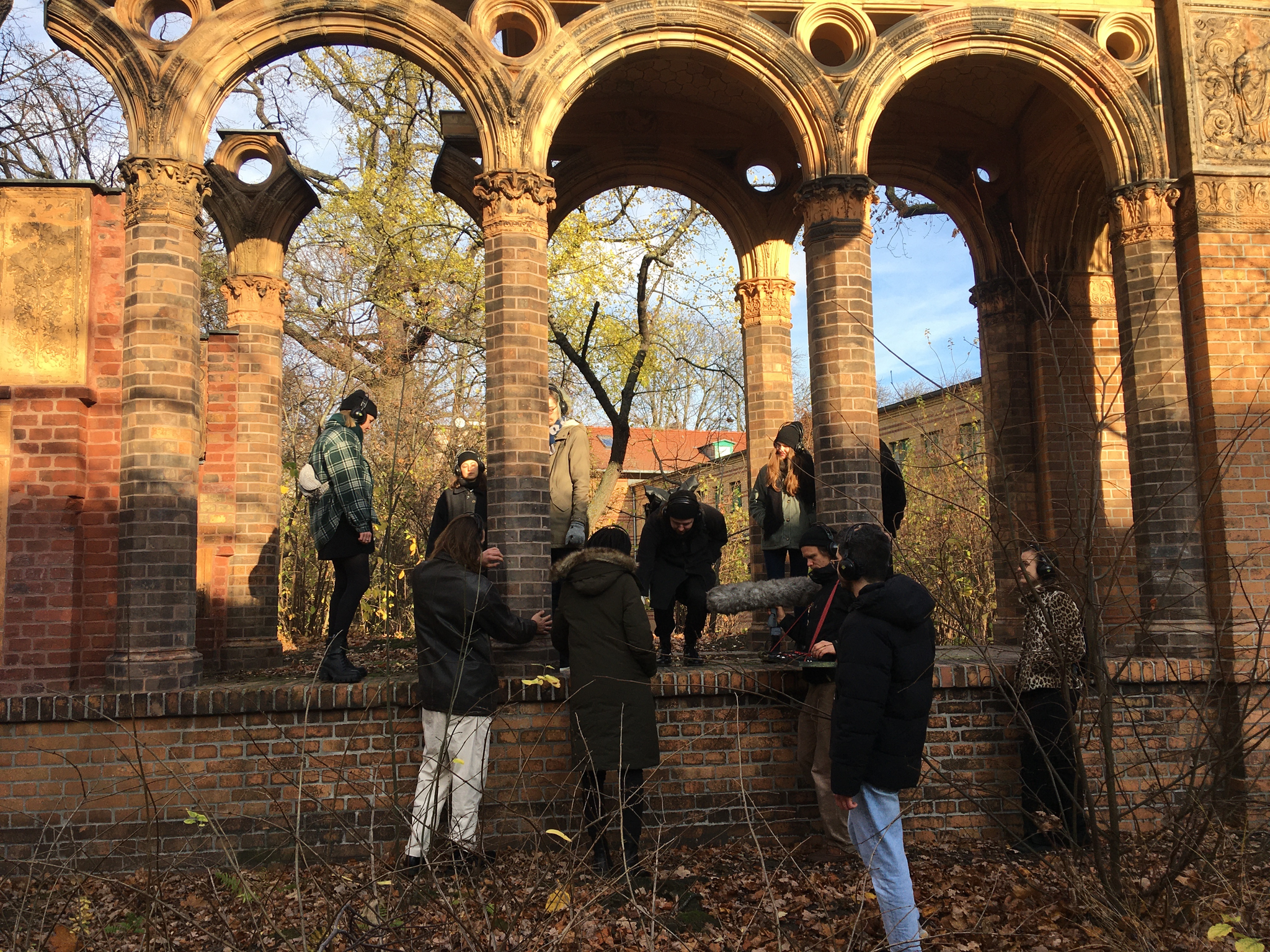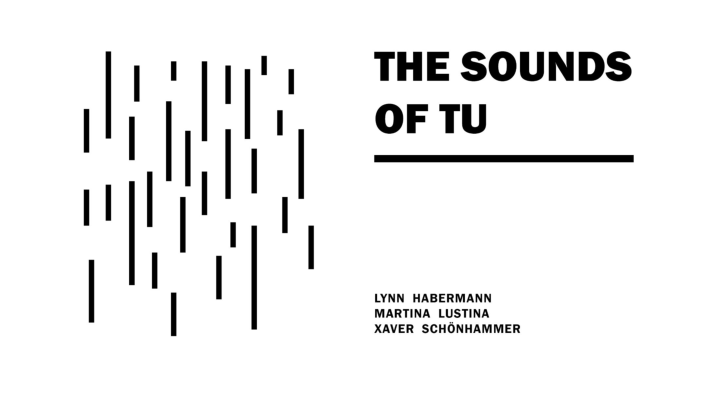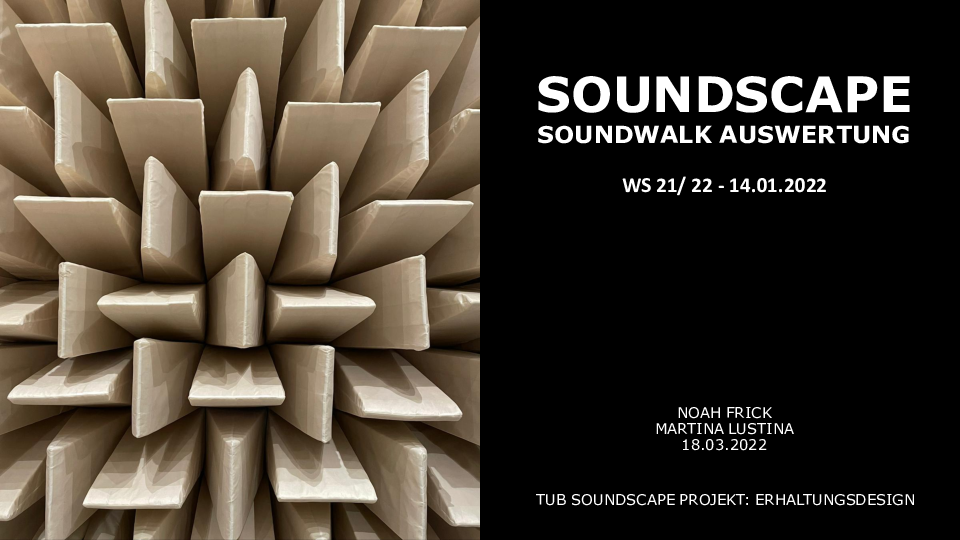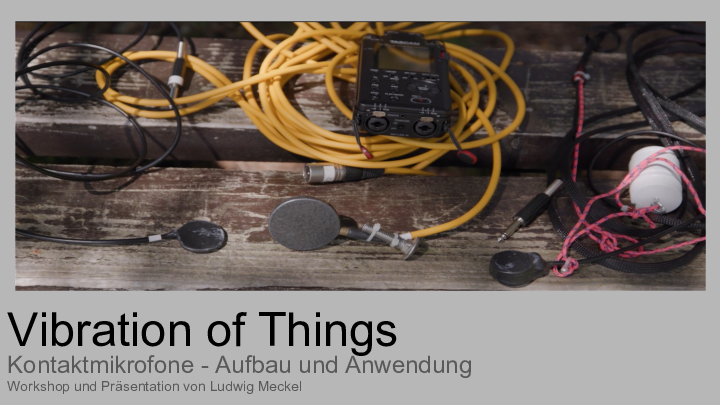The first semester of the project followed the idea of soundscape conservation design. Thereby, it focused on the existing sound conditions at the campus of the TU/UdK Berlin, located in Berlin-Charlottenburg. The goal was to work with the concept of Preservation Design and strengthening desired existing sound atmospheres.
< The Sounds of TU
Research and Design Concept
by Lynn Haberman, Martina Lustina, Xaver Schönhammer
This project delved into the concept of soundmaps, investigating their nature and purpose. It curated instances like radio aporee and noise-planet as initial references. It examined diverse data displays and visual representations. Specifically, it initiated the conceptual development of a soundm(app) for the TU Berlin, categorizing the soundscape based on Schafer's taxonomy, loudness, and acoustic properties. As a subsidiary effort, recordings from the university library were shared on the radio aporee platform.
Download report
Soundscape: Soundwalk Assessment >
research based on acoustics & perception
by Noah Frick, Martina Lustina
This research project focuses on acoustics and perception, utilizing graphs and charts to analyze the auditory environment. The evaluation method involves Perceived Affective Quality, coupled with a Spearman correlation test using a diagram of pleasantness and event richness. Data was gathered through soundwalks on the TU Campus based on the DIN-ISO system (ISO/TS 12913-3:2019). The study was held in several locations: Zwille, UdK, Ernst-Reuter Platz, Pyramide, and Einsteinufer.
Download report
< From Sound Drift to History Drift
audiopaper (in German)
by Elmar Conzen, Maren Berg
The project explores the historical sounds of TU Berlin before 1991, aiming to reconstruct the past auditory environment and create an immersive soundwalk on the current campus. By locating and conveying historical sounds, the project seeks to reveal changes, continuities, and provide listeners with a sense of the university's historical soundscape. OR A collage about soundscapes and what it means to drift on the threshold of sound theory and the sensual perception of sounds. We explore the theoretical foundations of soundscapes of soundscapes and how the artistic approach via sound drifts might help to understand not only historical reproduce and communicate not only historical facts, but also historical soundscapes. mediate. We will reflect on the potentials and limitations of such an immersive, collective experience and how it has influenced our perception (of urban environments).
Download report
Vibration of Things: Contact Mic >
workshop
by Ludwig Meckel
In the Contact Microphone Workshop, participants embarked on the construction of Piezoelectric Microphones, drawing inspiration from Nic Collins' "Handmade Electronic Music" and techniques by Ian Smith and Felix Blume. The workshop offered a deep dive into theoretical fundamentals such as Passive Piezoelectric Elements, Impedance Converters, and Connectors (XLR/JACK), accompanied by hands-on soldering practice. The wide-ranging applications of these microphones in sound art, field recordings, and acoustic ecology were discussed and the workshop culminated in a session of practical experimentation.

